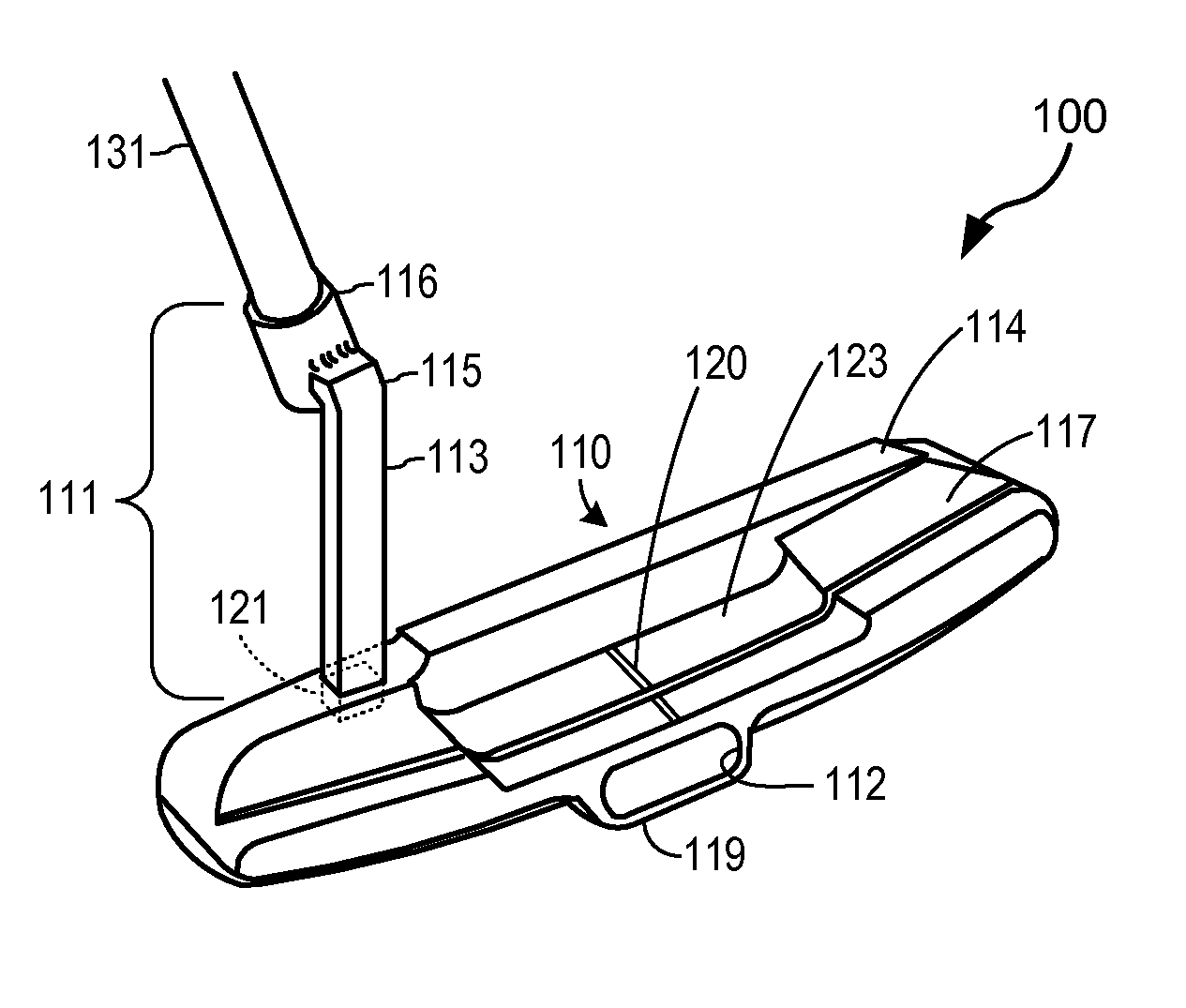Traditional putter with elevated mass
a putter and mass technology, applied in the field of golf clubs, can solve the problems of reducing affecting the accuracy of the roll, and the ball being launched too high with the old prior art style putter, so as to achieve the required roll distance, and improve the accuracy of the roll. the effect of accuracy and consistency
- Summary
- Abstract
- Description
- Claims
- Application Information
AI Technical Summary
Benefits of technology
Problems solved by technology
Method used
Image
Examples
Embodiment Construction
[0024] Referring to FIGS. 1, 4, 7 and 8 of the drawings, the reference numeral 100 generally designates a putter head embodying features of the present invention. The putter head 100 generally comprises a face portion 110, the cavity box sole 112 and elevated flange portion 117, a top-line portion 114, and a hosel or “gooseneck” portion 111 with an opening 116.
[0025] The golf club head 100 is shown in a finished state such that the top-line portion 114 includes an optional alignment mark 120 and the face portion 110 includes optional milled grooves and / or punch marks or other surface treatment as permitted by the USGA and R&A Rules. Preferably, the golf club head 100 in a finished state has been sanded, painted and / or plated and polished as desired.
[0026] In one embodiment a metal billet is CNC machined, bead blasted, nickel plated, finished, polished, painted in the engraved areas, assembled with a modular hosel 111, a shaft 131 and a grip (not shown). In one embodiment, the stoc...
PUM
 Login to View More
Login to View More Abstract
Description
Claims
Application Information
 Login to View More
Login to View More - R&D
- Intellectual Property
- Life Sciences
- Materials
- Tech Scout
- Unparalleled Data Quality
- Higher Quality Content
- 60% Fewer Hallucinations
Browse by: Latest US Patents, China's latest patents, Technical Efficacy Thesaurus, Application Domain, Technology Topic, Popular Technical Reports.
© 2025 PatSnap. All rights reserved.Legal|Privacy policy|Modern Slavery Act Transparency Statement|Sitemap|About US| Contact US: help@patsnap.com



